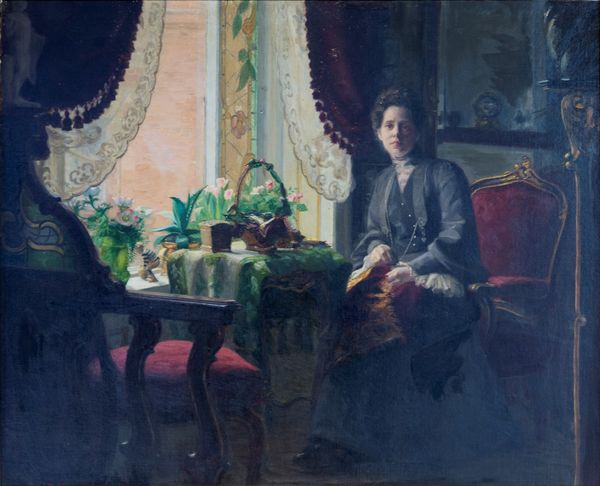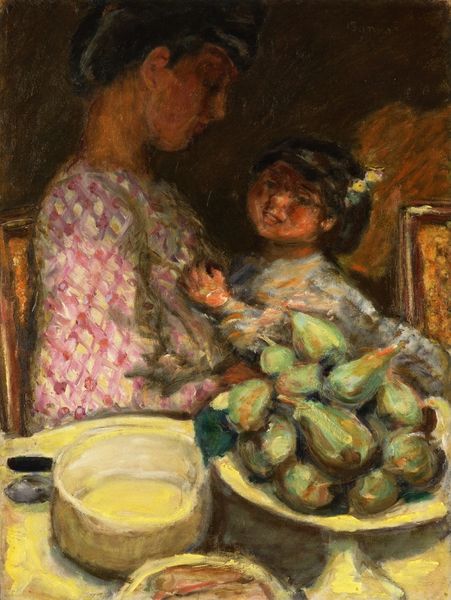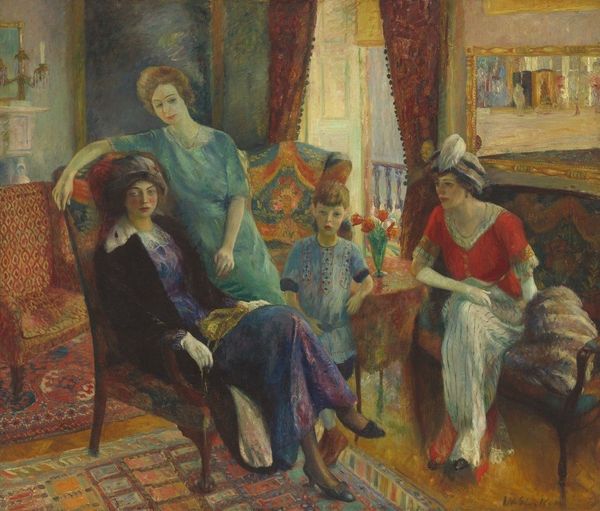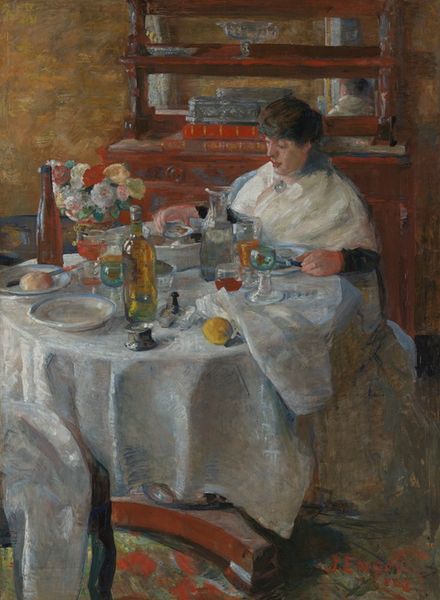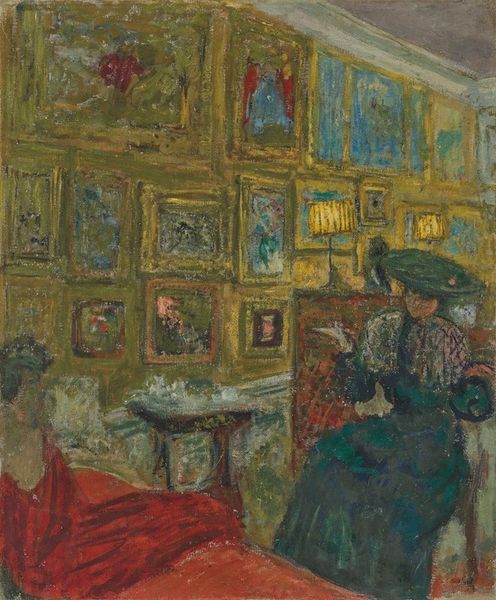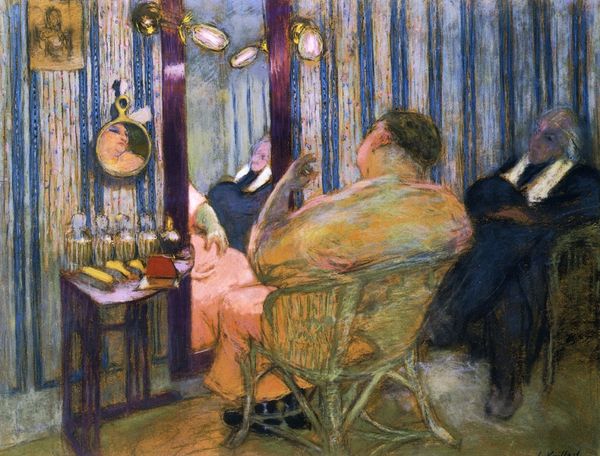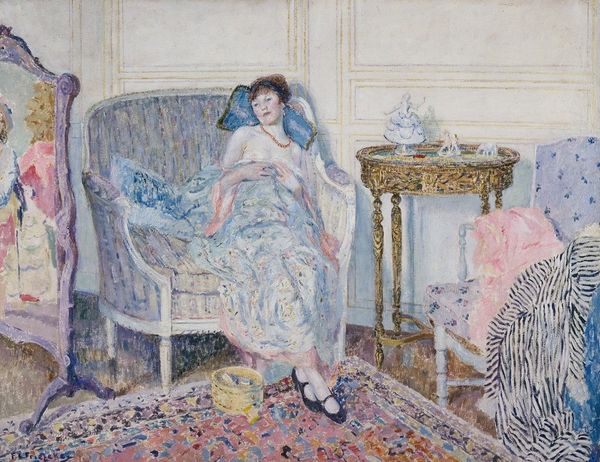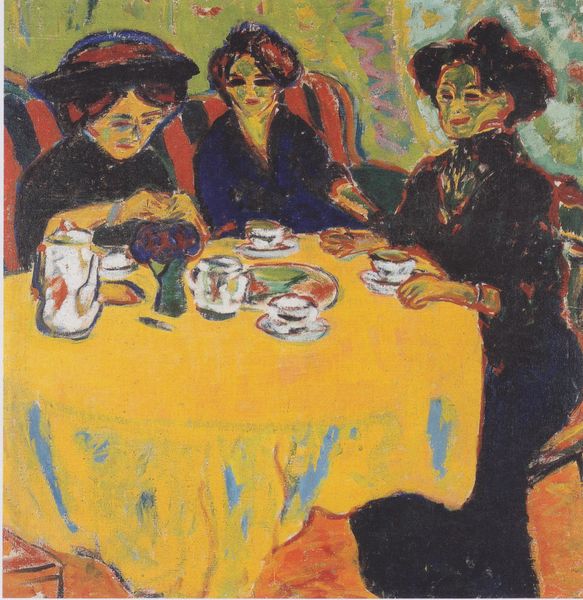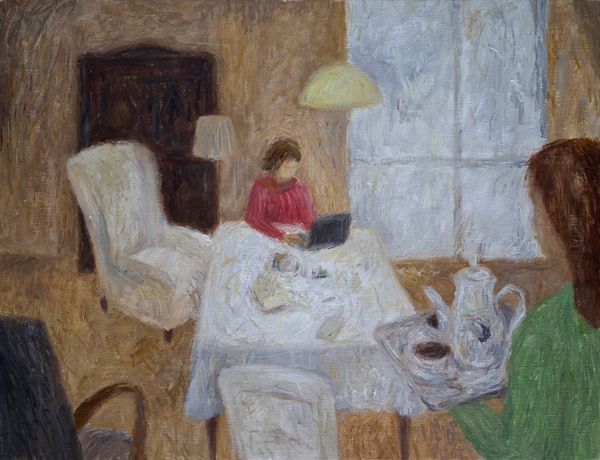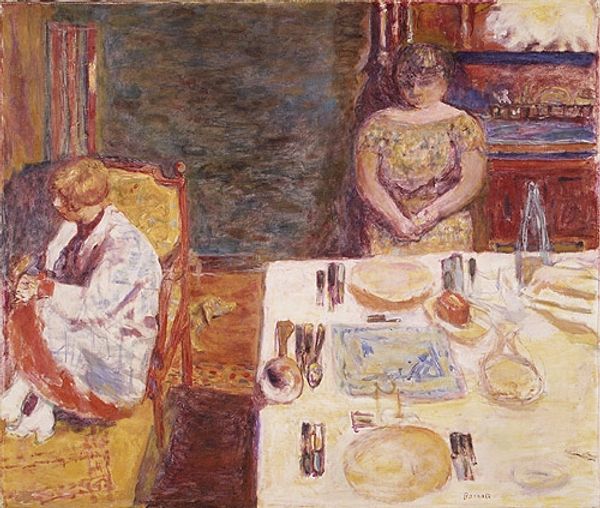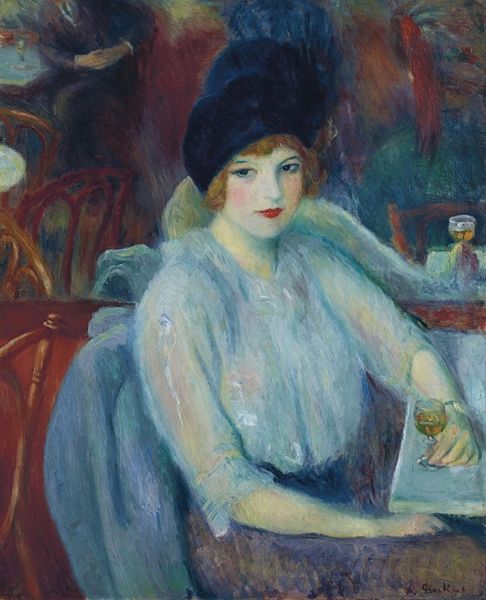
Copyright: Public domain
Curator: Jósef Pankiewicz's "Tea Drinker (A Visit)," completed in 1922, is a delightful example of intimate genre painting, showcasing his mastery of Impressionistic techniques in capturing a domestic scene. What strikes you initially? Editor: It's cozy, almost stiflingly so. The room seems crammed with textures, colours. There's something bourgeois and a little claustrophobic about it. I want to understand what materials constitute it all. Curator: The painting speaks to the tradition of Polish "salon" culture. The figures and domesticity represented mirror the increased visibility and relative social freedom afforded women in the early 20th century—particularly, it’s about representing the female space and social exchanges. Editor: Let's not overlook the construction of "intimacy" here. It's staged, rendered through a deliberate application of oil paint. See how Pankiewicz contrasts textures--the flat planes of colour against floral explosions, to the rough grain of the wooden chair—this impacts the social narrative too. Curator: Exactly. It also embodies a subtle critique of consumerism emerging at that time; each element serves both decorative and representational purposes that hint at societal values around taste and status within specific social strata. Editor: It’s fascinating how the materiality amplifies this sense of domestic tension. Think about the labor that went into these textiles—the implied lives involved in manufacturing that china, too. It really adds an extra layer to this intimate “visit.” Curator: Precisely. It's a dance between social narrative, gender identity, and burgeoning consumer culture depicted with impressionistic strokes and colours, really emphasizing a specific sociopolitical dimension, a female social exchange with nuances on what was happening for women in 1920's Poland. Editor: I now read this scene as more than an image; instead, it’s a product of materials and of the complex relationship between making, consumption and seeing, creating more narrative depth, beyond just representation. Curator: Ultimately, Pankiewicz created not just a portrait of two women sharing tea but also offered his audience a glimpse into the changing social fabric where feminine identity and new freedoms of consumer culture met on equal, intriguing grounds. Editor: A cozy trap—visually beautiful, laden with layers of meaning created through a confluence of materials, labour and that critical sense of viewing, creating something really interesting that allows further contemporary questions.
Comments
No comments
Be the first to comment and join the conversation on the ultimate creative platform.
